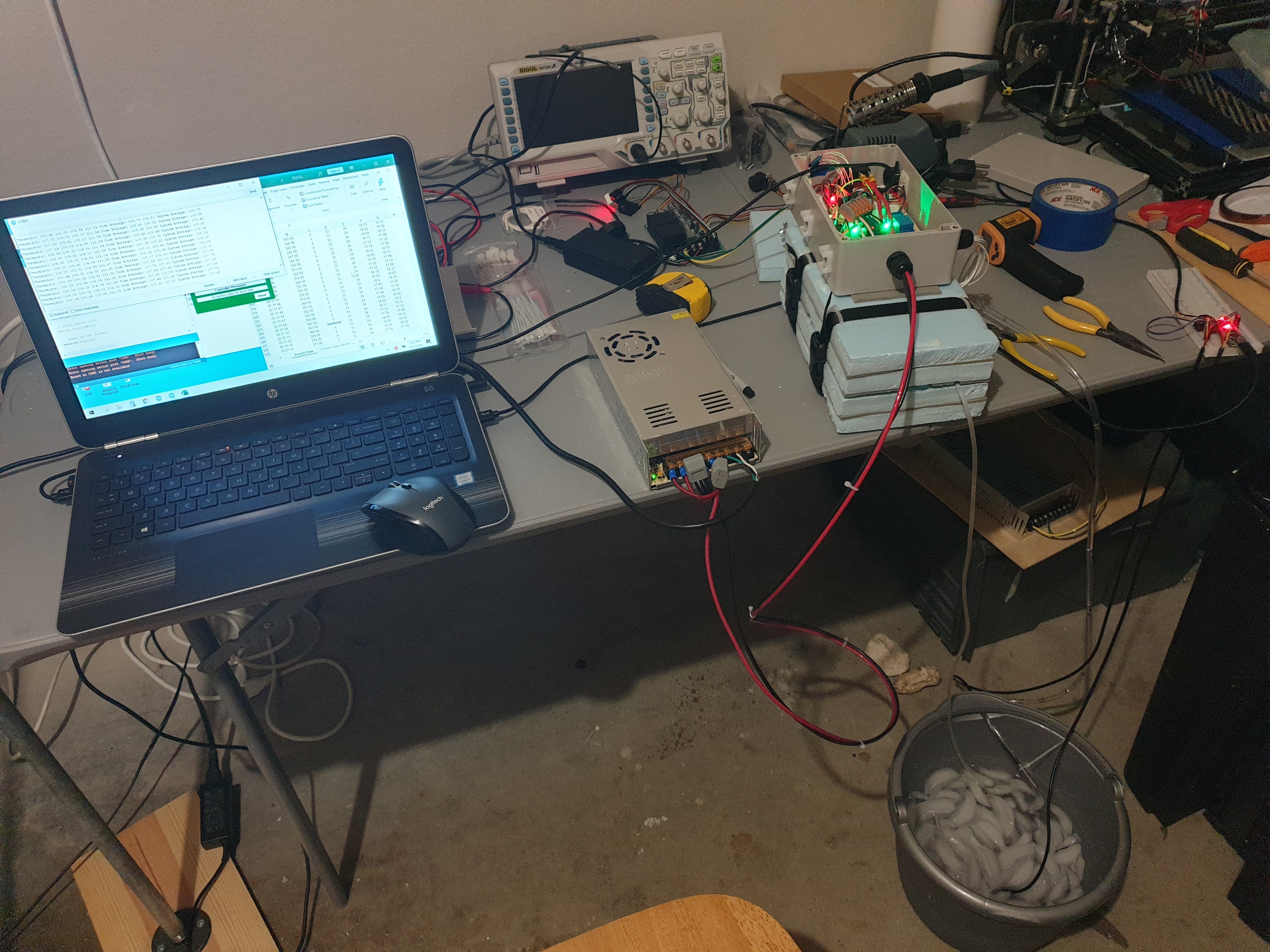
The two hot plate prototype is showing promising fluid warming capabilities at the 20mL/min target flow rate!
For Test 1 and 2, I increased the heater set points until the outlet temperature was within +/- 2°C of 38°C human body temperature. I hit the functional limit of the heater setpoints during test 2 before outlet temperature was near the target.
Test 1, approx 20°C inlet temperature:
- fluid flow rate, 20mL/min
- inlet temperature, 19°C
- outlet temperature, 36.5°C
- total fluid temperature rise, 17.5°C
- heater-off set point, 105°C
- heater-on set point, 103.5°C
- max observed temperature, 112°C
- ambient temperature, 28°C
Test 2, approx 4°C inlet temperature:
- fluid flow rate, 20mL/min
- inlet temperature, 6°C
- outlet temperature, 26°C
- total fluid temperature rise, 20°C
- heater-off set point, 105°C
- heater-on set point, 103.5°C
- max observed temperature, 112°C
- ambient temperature, 24°C
Seeing that the device could not achieve an outlet temperature within +/- 2°C of 38°C. I decided to lower the flow rate to find how close I could get to 38°C outlet temperature. Lowest flow rate that the peristaltic pump can run at is 13mL/min. The 7mL/min drop in flow rate resulted in a 7.5°C greater temperature rise!
Test 3, approx 4°C inlet temperature:
- fluid flow rate, 13mL/min
- inlet temperature, 6°C
- outlet temperature, 33.5°C
- total fluid temperature rise, 27.5°C
- heater-off set point, 105°C
- heater-on set point, 103.5°C
- max observed temperature, 112°C
- ambient temperature, 24°C
Test 4 was run at 64mL/min flow rate to understand temperature rise at higher flow rates. It showed a 8°C temperature rise.
Test 4, approx 4°C inlet temperature:
- fluid flow rate, 64mL/min
- inlet temperature, 5.5°C
- outlet temperature, 13.5°C
- total fluid temperature rise, 8°C
- heater-off set point, 105°C
- heater-on set point, 103.5°C
- max observed temperature, 112°C
- ambient temperature, 24°C
All and all, I am very happy with what this first prototype was able to achieve. With more development of the heat transfer approach, this device has great potential at flow rates of 20mL/min and below.
 John Opsahl
John Opsahl
Discussions
Become a Hackaday.io Member
Create an account to leave a comment. Already have an account? Log In.